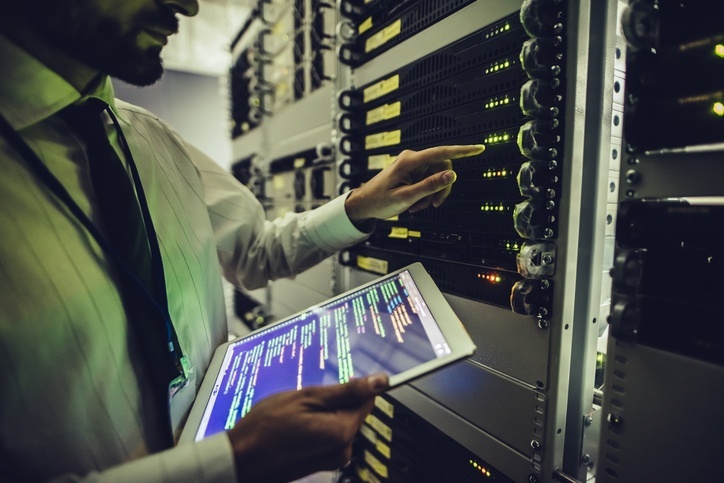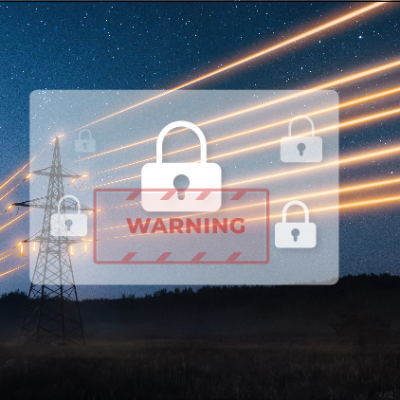
Cybercrimes are on the rise, cyber attacks can affect any company anywhere in the world. As these attacks become more commonplace, they have also become more sophisticated, which makes it even more difficult to combat and minimize their impact on society.
A few years ago, cyber attacks were almost solely done for fun by hackers, but today they have become a multi-million dollar business and, by the looks of things, it is going to continue to grow, with no end in sight.
Both governments and private enterprises have to spend millions of dollars to combat and mitigate cybercrime.
We are just a few clicks away from myriad forms of attacks (DDoS, Botnets, Malware installation, Spam and Phishing emails….), by which any user, from home or at work, can find himself surprised by an attack, without warning, compromising his personal or corporate cybersecurity.
We can safely say that traditional defense mechanisms, like antiviruses in PCs, are obsolete to face this new menace. The complexity and sheer number of attacks can clearly have some very negative effects on any organization.
Add to all this, the boom of Big Data and the huge quantities of data that companies possess, from different sources, systems, platforms, which contribute to greater security breaches which are more costly, both time wise and monetarily, to fix.
With the aim of trying to remedy this situation and deal with these threats, with increased know-how and security, some systems known as SIEMs (Security Information and Events Management Systems) have been developed. Their performance in the face of these cyber threats have proven themselves to be excellent, therefore, companies see it as an obligation to have SIEMs as part of their IT security systems.
SIEMs (Security Information and Events Management Systems) are platforms that centralize the gathering, storing and interpretation of relevant security data.
In this way an analysis of a multi location situation is unified, which allows for the detection of tendencies and strange patterns.
The majority of SIEM systems work by deploying multiple agents that gather events related to security, from different data sources, from different environments and different physical locations.
Why do we need a SIEM and what do they do?
If we are talking about IT security, time and especially early response time, are very important factors; not only because they recognize suspicious behavioral patterns and unusual movements in the corporate network, but SIEMs can react quickly to avoid further damage.
As we have noted earlier, there is no doubt that cybercrime and cyber attacks on any system have been on the rise.
This is one of the main reasons why monitoring systems and networks play a crucial role to help companies protect themselves, and it is here where SIEMs are playing a determining role in increased corporate security. The evolution in methodologies and techniques of these platforms has increased in recent years.
The benefits of SIEM are quick and efficient responses to IT incidents
Different types of companies use SIEMs for different reasons, thereby, the benefits vary depending on their type of organization. However, all SIEMs work in the same way, they ingest, store, process and interpret huge amounts of data, unifying the vision of the results.
Automated reports for IT security staff
One of the main objectives for companies that implement these types of tools is to be able to obtain different reports and metrics, the degree of protection the company has and the information it contains.
The reports are given out to the IT security personnel in their logs and they are analysed so that any possible failures, attacks or errors are eliminated.
Each data source registers its own security events in their logs and the SIEM system gathers these logs, actively and passively, and unifies them in a single log of security events.
Afterwards, as we have seen before, the system will be able to give clear, concise and unified information on the company’s grade of security; as well as warn of possible attacks and threats.
To not have a SIEM system in place, limits what the company knows about the information it generates, although it is the organization´s logs.
By having a SIEM system in place, a company can save time and resources, providing itself with a series of IT security reports that are agile and dynamic. This will provide the necessary indicators for decision making and implementation of procedures that will give a response to security issues.
Detect undetectable cyber attacks
SIEM systems can detect threats, undetectable to other traditional IT security methods. SIEM don´t just react to a cyber attack once it has taken place, but they anticipate them; through early detection.
Thanks to the early detection, IT security people can quickly take the appropriate measures, following pre-established protocols, to avoid further and sometimes irreversible damage.
Little by little Artificial Intelligence is being implemented in SIEMs, making them more autonomous and increasing their capabilities, thereby, reducing response time to any incident. Therefore, any company who has an ambitious cyber security plan should not be without a SIEM.
Analyse, warn and uncover vulnerabilities
Here are two examples of security risks:
- El hecho de que un usuario intenta repetidamente iniciar sesión en diferentes sistemas, teniendo un repentino éxito;
- A user tries to start various sessions repeatedly on various systems, being successful initially; this could be a potential security incident.
- Someone could get onto the corporate network in a short period of time from different locations is another indicator of a security breach.
A SIEM system would detect the anomalies or malicious behaviour in these two scenarios, it would interact with the system so as to generate alarms, warnings, etc….
Configured correctly, the system is capable of taking measures, by itself, to mitigate risks; depending on the correlations, it would be capable of recognizing and monitoring problems; for example changing the rules to a corporate firewall.
Within a SIEM system there are tools that observe and analyse the behavioural patterns of users; creating, with the data available, behavioural profiles relative to security, like starting a session, net activity or access to files…. etc.
We must not forget the important role that SIEMs play as forensic analysts in security incidents.
Data analysis allows IT/OT personnel to fully understand what has happened (operation and activity before the attack) and why (analysis of system weakness) and, thereby, putting in measures to stop future attacks.
Increase the efficiency of different incidents
As we have talked about earlier, SIEMs significantly increase the efficiency of detecting incidents, which in turn saves time for those who are responsible to investigate them. Quick decisions, combined with quick and professional use of different systems, allow for early response time to possible cyber attacks and contributes to minimizing the damage.
SIEM systems quickly identify the route of attack, detect the origin of the data that was affected and provide an automated mechanism to stop attacks once they are in course.
A Security Information and Events Management System is necessary in an Organization
- SIEM systems provide companies with various benefits, allowing them to ingest and analyse large quantities of information to identify in that information, clues to that attack and real time threats.
- The possibility of finding threats in files, through an exhaustive analysis of them
- Quicker investigations of alerts and quicker responses to them
- Previously unknown threat detection, based on anomalies of behavioural patterns
- Monitoring of company activities, providing the company with user activity
The data engineering department at CIC Consulting Informático, through the development of and implementation of SIEM systems, can provide your company with the tools you need to be protected from cyberattacks. Thereby, providing your company with the necessary business intelligence to analyse your own information and allow you to take informed decisions and carry out preventive measures and respond early to cyber security threats.
Make yourself responsible for your own security and know exactly the state of your IT security.

